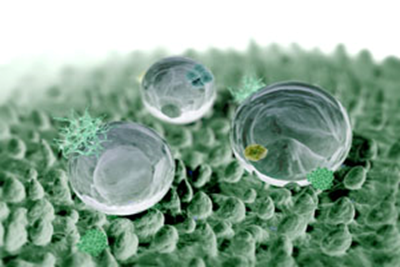The lotus effect refers to self-cleaning properties that are a result of ultrahydrophobicity as exhibited by the leaves of Nelumbo or "lotus flower".[1] Dirt particles are picked up by water droplets due to the micro- and nanoscopic architecture on the surface, which minimizes the droplet's adhesion to that surface. Ultrahydrophobicity and self-cleaning properties are also found in other plants, such as Tropaeolum (nasturtium), Opuntia (prickly pear), Alchemilla, cane, and also on the wings of certain insects.[2]
The phenomenon of ultrahydrophobicity was first studied by Dettre and Johnson in 1964[3] using rough hydrophobic surfaces. Their work developed a theoretical model based on experiments with glass beads coated with paraffin or PTFE telomer. The self-cleaning property of ultrahydrophobic micro-nanostructured surfaces was studied by Wilhelm Barthlott and Ehler in 1977,[4] who described such self-cleaning and ultrahydrophobic properties for the first time as the "lotus effect"; perfluoroalkyl and perfluoropolyether ultrahydrophobic materials were developed by Brown in 1986 for handling chemical and biological fluids.[5] Other biotechnical applications have emerged since the 1990s.[6-11]

Computer graphic of a lotus leaf surface
Information Source: From Wikipedia, the free encyclopedia

